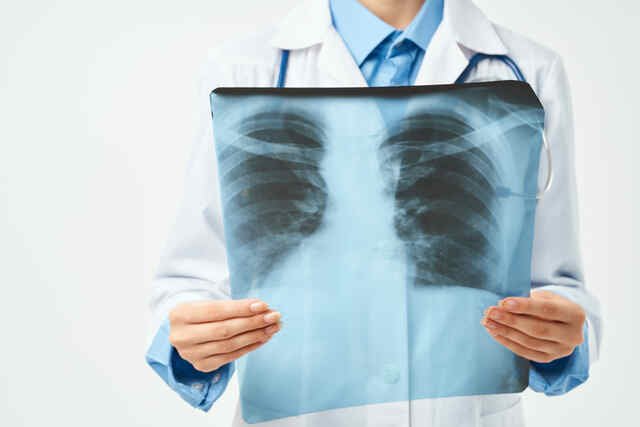Difference Between Asthma and COPD
Breathing problems are among the most common reasons people visit a doctor, and two of the major causes are asthma and Chronic Obstructive Pulmonary Disease (COPD).
Both conditions affect the airways and make breathing difficult, but they differ in their causes, age of onset, and response to treatment.
If you’ve ever wondered about the difference between asthma and COPD, this article will help you understand both conditions clearly, with guidance from Dr Hrushikesh Vaidya, an experienced Pulmonologist and Critical Care Specialist.
What Is Asthma?
Asthma is a chronic inflammatory disease of the airways that makes them swollen and sensitive. When triggered, the muscles around the airways tighten, the lining swells, and mucus production increases, all of which narrow the air passages and make breathing difficult.
Common Asthma Triggers
- Dust, pollen, and animal dander
- Cold air or sudden weather changes
- Air pollution and cigarette smoke
- Strong odours or chemical fumes
- Respiratory infections
- Exercise or emotional stress
Typical Symptoms of Asthma
- Wheezing (whistling sound while breathing)
- Shortness of breath
- Chest tightness
- Coughing, especially at night or early morning
Asthma often starts in childhood or early adulthood, and symptoms may come and go. With proper management, most people with asthma can lead completely normal lives.
What Is COPD?
Chronic Obstructive Pulmonary Disease (COPD) is a long-term, progressive lung disease that causes permanent airflow obstruction. It includes two main conditions:
- Chronic bronchitis: inflammation of the airways with mucus overproduction
- Emphysema: damage to the air sacs (alveoli), reducing oxygen exchange
Main Causes of COPD
- Long-term smoking (the most common cause)
- Exposure to air pollution or industrial fumes
- Occupational dust or chemical exposure
- Repeated respiratory infections
- Genetic conditions such as alpha-1 antitrypsin deficiency
Symptoms of COPD
- Chronic cough with sputum
- Shortness of breath, especially on exertion
- Fatigue or weakness
- Wheezing
- Frequent respiratory infections
COPD is most often diagnosed in middle-aged or older adults who have a history of smoking or long-term exposure to irritants.
Asthma vs COPD: How the Airways Differ
In asthma, the airways become temporarily narrowed due to inflammation and muscle tightening. The structure of the lungs remains largely normal between attacks.
In COPD, however, there is permanent structural damage to the airways and air sacs. The lungs lose their elasticity, and trapped air makes exhalation difficult, leading to chronic breathlessness.
In simple terms:
- Asthma = Reversible airway narrowing
- COPD = Irreversible airway damage
Overlap Syndrome (Asthma–COPD Overlap or ACO)
Some patients show features of both asthma and COPD, known as Asthma-COPD Overlap (ACO). These patients often:
- Are middle-aged or older
- Have a history of smoking but also allergic tendencies
- Experience frequent and severe symptoms
- Respond partially to both bronchodilators and inhaled corticosteroids
ACO requires specialised management by a pulmonologist to tailor treatment according to both conditions.
Diagnosis: How Doctors Distinguish Between Asthma and COPD
Proper diagnosis is essential because the treatment approach differs.
1. Clinical Evaluation
Your doctor will take a detailed history of:
- Symptom pattern (intermittent vs persistent)
- Triggers such as allergens, smoke, or infections
- Family history of asthma or allergies
- Smoking or occupational exposure
2. Physical Examination
- Listening to breathing sounds (wheezing, prolonged exhalation)
- Checking oxygen saturation and chest expansion
3. Lung Function Tests (Spirometry)
Spirometry measures how much air you can exhale and how fast.- In asthma, airflow improves significantly after using a bronchodilator.
- In COPD, improvement is limited, showing partly irreversible damage.
4. Additional Tests
- Chest X-ray or CT scan: To assess lung damage
- Allergy testing: To identify asthma triggers
- Blood tests: For oxygen levels and signs of inflammation
Treatment: Managing Asthma and COPD
Although both conditions involve breathing difficulty, their management goals differ slightly.
Asthma Treatment
The focus is on controlling inflammation and preventing attacks.
Common treatments include:
- Inhaled corticosteroids (ICS): Reduce airway inflammation
- Bronchodilators: Relax airway muscles for easier breathing
- Allergy medications: For patients with allergic asthma
- Trigger management: Avoid dust, smoke, or pollution
- Vaccinations: To prevent respiratory infections
With good control, asthma symptoms can become rare or disappear for long periods.
COPD Treatment
The goal is to relieve symptoms, slow disease progression, and prevent complications.
Main treatments include:
- Bronchodilators: Short-acting and long-acting to keep airways open
- Inhaled corticosteroids: Reduce inflammation and flare-ups
- Pulmonary rehabilitation: Exercise and breathing training programs
- Oxygen therapy: For advanced cases
- Smoking cessation: The most crucial step in slowing disease progression
- Vaccines: Annual flu and pneumonia vaccines
While COPD cannot be fully reversed, early diagnosis and treatment can significantly improve quality of life.
Lifestyle Management and Prevention
Both asthma and COPD require lifestyle adjustments to protect the lungs.
For Asthma:
- Identify and avoid personal triggers
- Use prescribed inhalers regularly
- Monitor symptoms and peak flow readings
- Maintain a clean home environment
For COPD:
- Quit smoking completely
- Avoid exposure to fumes, dust, or cold air
- Eat a balanced diet to maintain strength
- Stay active with light exercise or physiotherapy
- Follow up regularly with your pulmonologist
When to Seek Medical Help
Contact your doctor immediately if you experience:
- Worsening breathlessness or wheezing
- Persistent cough with coloured sputum
- Difficulty performing daily activities
- Chest tightness that does not improve with inhalers
- Frequent need for rescue inhaler
Emergency care is required if there is:
- Severe shortness of breath at rest
- Bluish lips or fingertips
- Confusion or fainting
Living Well with Asthma or COPD
Both conditions can be controlled with consistent medical care and awareness. Patients who follow their treatment plans can continue working, exercising, and enjoying a normal life.
Regular check-ups with a pulmonologist help adjust medications, prevent flare-ups, and monitor lung function.
Conclusion
While asthma and COPD share similar symptoms like coughing and breathlessness, they are distinct diseases with different causes and treatment approaches. The main difference between asthma and COPD lies in reversibility; asthma is typically reversible and often linked to allergies, whereas COPD is largely irreversible and commonly caused by smoking or long-term irritant exposure.
Related Posts

Shortness of breath after eating
- Dr Hrushikesh Vaidya
- September 11, 2025
Shortness of Breath After Eating: Causes, Symptoms & Relief Have you ever felt like it’s ..

What is Pleural Effusion? Causes, Symptoms, and Treatment Options Explained
- Dr Hrushikesh Vaidya
- April 11, 2025
What is Pleural Effusion? Causes, Symptoms, and Treatment Options Explained Pleural effusion is ..




